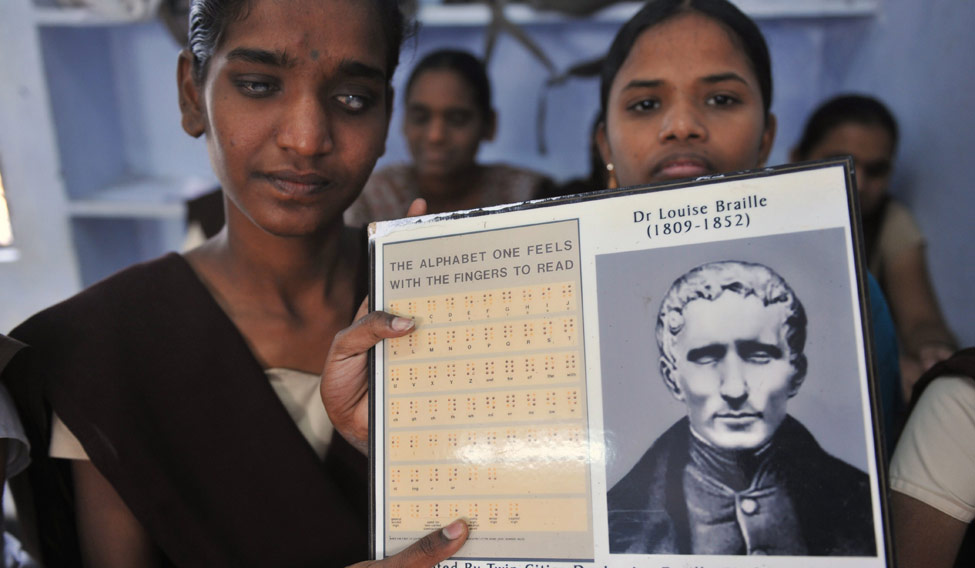Heller Keller once said, "The only thing worse than being blind is having sight but no vision". For a person with sight, it is inconceivable to imagine the world of a blind person. What we take as granted is the very thing that a visually impaired person dreams about. The year 1829 proved to be momentous, when a 15-year-old French boy named Louis Braille decided to change the way the blind read, and the world was never the same again.
Though he lost his eyesight in an accident at his father's harness workshop when he was three, Louis did not let his disability deter his aspiration to study. He continued to go to his old school, where he realised he could not learn everything by just listening. Things finally looked up when, at the age of 10, he received a scholarship to study at the Royal Institution for Blind Youth in Paris. However, he realised that there was no scope of learning as the teachers at the institute did little other than teaching verbally. Also, the library at the institution provided a complicated system of raised alphabets, which was very hard to read.
Soon enough, in 1821, a former soldier named Charles Barbier came to the institute and shared his invention named Night Writing, which comprised of a code of 12 raised dots that was used by soldiers to pass on secret information on the battlefield without having the need to speak. Braille found it very interesting and took no time in deciphering the codes. It took him seven years to come up with a reading system that consisted of six raised dots and revolutionised the way the blind could read and write.
However, it wasn't easy for the new method to gain acceptance. Since there was no institution that would take up the initiative to teach the blind, the students had to be taught the code on their own. Even at the institution, where Braille taught after he graduated, the code was adopted posthumously. Named after the inventor, it was only in 1868 that the Braille became famous worldwide when a group of British men, now known as the Royal National Institute for the Blind, diligently took up the cause.
The Braille is a milestone in itself, making the blind empowered in a world governed by visual signs and symbols. A code that uses bumps and indentations that can be recognised by touch, it could be easily translated into all languages. Subjects like mathematics, music and computer programming could be read and written in Braille. Today, there are Braille keyboards and even Android phones, making it easier for the visually impaired to have a better life not marred by their disability. As a tribute to the unparalleled contributions of Braille towards the blind society in helping them read and write, World Braille Day is celebrated every year on January 4, commemorating the birth anniversary of the creator of the code.




